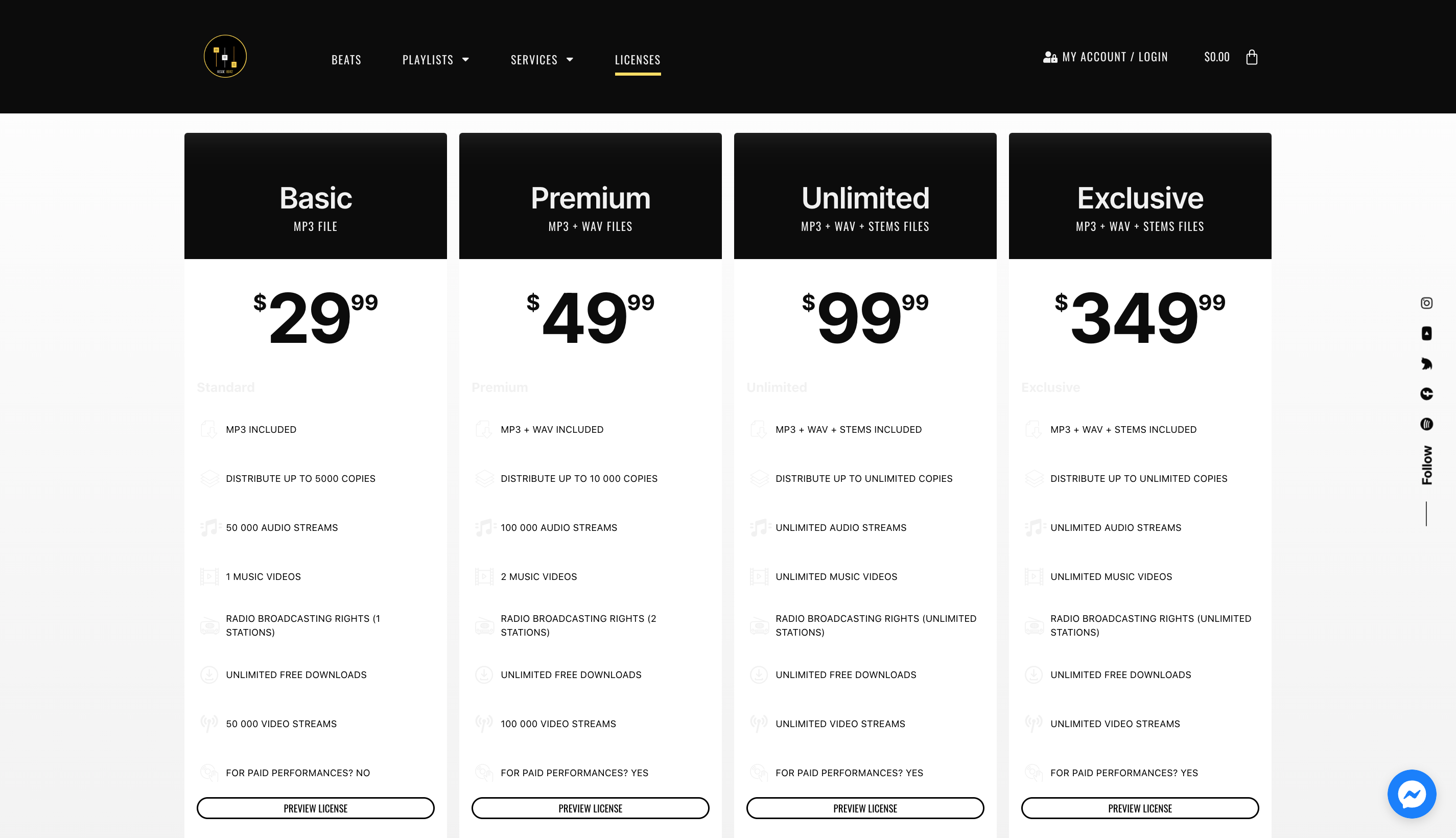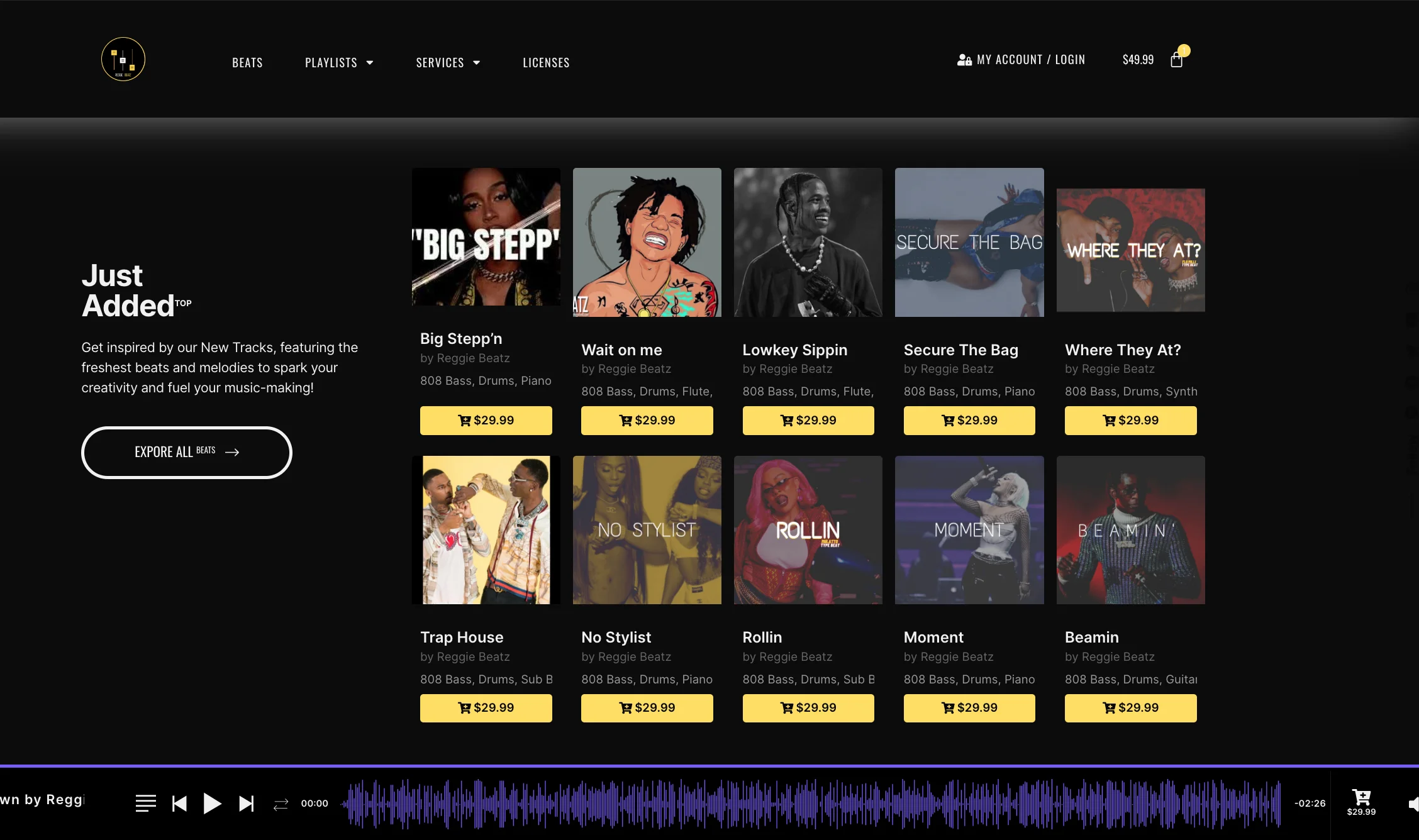
Beat Licensing Explained
Beat Licensing Explained Table of Contents Introduction In the world of music production, beats play a vital role in creating

<meta name=”description” content=”Learn how to price beats effectively and maximize your earnings as a music producer. This comprehensive guide covers various strategies and considerations for setting the right prices for your beats.”>
As a music producer, one of the most critical decisions you’ll make is how to price your beats. Pricing your beats appropriately can significantly impact your success and earnings in the music industry. Setting the right price requires careful consideration of various factors, including market demand, your target audience, production quality, and competition.
In this comprehensive guide, we’ll dive deep into the world of beat pricing and explore effective strategies to maximize your earnings. Whether you’re a seasoned producer or just starting, this article will provide valuable insights to help you navigate the complex landscape of pricing beats.
Before diving into pricing strategies, it’s essential to understand the market dynamics for beats. The demand for beats varies based on genre, trends, and artists’ preferences. Conduct thorough research to identify popular genres, emerging trends, and artists who frequently purchase beats. This knowledge will help you tailor your pricing strategy and target the right audience.
When pricing your beats, it’s crucial to align your pricing strategy with your goals. Are you aiming for maximum revenue per sale or aiming to attract a broader customer base? Understanding your objectives will guide your decision-making process and ensure your pricing aligns with your overall business strategy.
To set the right price, you need to determine the value of your beats. Factors such as production quality, uniqueness, and your reputation as a producer all contribute to the perceived value. Analyze your strengths and weaknesses as a producer and evaluate the quality of your beats objectively. Understanding the value you provide will help you establish competitive pricing.
Analyzing your competition is crucial in any industry, and beat pricing is no exception. Research other producers within your genre and analyze their pricing strategies. Look for patterns, pricing tiers, and any unique selling propositions they offer. This analysis will give you a benchmark to compare your pricing against and help you position yourself in the market effectively.
Several factors influence beat prices. Understanding these factors will enable you to make informed pricing decisions. Some common factors include:
Consider these factors carefully when setting your prices to ensure they accurately reflect the value you offer.
Now that we have a good understanding of the market and key factors, let’s explore various pricing strategies you can adopt:
Offering package deals and discounts can be an effective way to increase sales and attract customers. Consider bundling multiple beats together at a discounted price or offering “buy one, get one free” deals. These strategies encourage customers to purchase more beats and can lead to higher overall revenue.
When pricing your beats, you’ll need to decide whether to offer them as exclusive or non-exclusive licenses. Exclusive licenses grant the buyer sole ownership of the beat, while non-exclusive licenses allow multiple buyers to use the beat. Exclusive beats generally command higher prices due to their exclusivity, while non-exclusive beats offer a more affordable option for artists on a budget.
Collaborating with artists and licensing your beats to established musicians can be a lucrative revenue stream. Consider partnering with artists to create custom beats or offering licensing opportunities for commercial use. These collaborations and licensing deals can provide exposure and increase your overall earnings.
As a music producer, it’s essential to understand how royalties work. Royalties are ongoing payments that you receive when your beats are used commercially or streamed. Educate yourself about the different types of royalties, such as mechanical royalties, performance royalties, and synchronization royalties. Understanding royalties will help you negotiate fair deals and maximize your long-term earnings.
No matter how talented you are as a producer, effective promotion and marketing are crucial for success. Develop a comprehensive marketing strategy that includes social media promotion, collaborations with artists, and utilizing platforms like YouTube and SoundCloud. By increasing your visibility and brand awareness, you can attract more customers and command higher prices for your beats.
Pricing is not a one-time decision. It’s essential to track the performance of your beats and adjust prices accordingly. Monitor sales data, customer feedback, and market trends to identify pricing opportunities and make data-driven adjustments. Regularly reviewing and updating your prices will ensure they remain competitive and aligned with the market demand.
Avoiding common pricing mistakes is crucial to ensure your pricing strategy is effective. Here are a few pitfalls to watch out for:
By avoiding these common pricing mistakes, you can position yourself for success in the music industry and maximize your earnings.
Pricing your beats effectively is a crucial aspect of building a successful music production business. By understanding the market, determining the value you provide, analyzing competition, and implementing smart pricing strategies, you can maximize your earnings and attract a loyal customer base. Remember to stay flexible, track your performance, and regularly adjust your prices to adapt to market dynamics. With careful consideration and a data-driven approach, you can set the right prices for your beats and achieve success in the music industry.

Beat Licensing Explained Table of Contents Introduction In the world of music production, beats play a vital role in creating